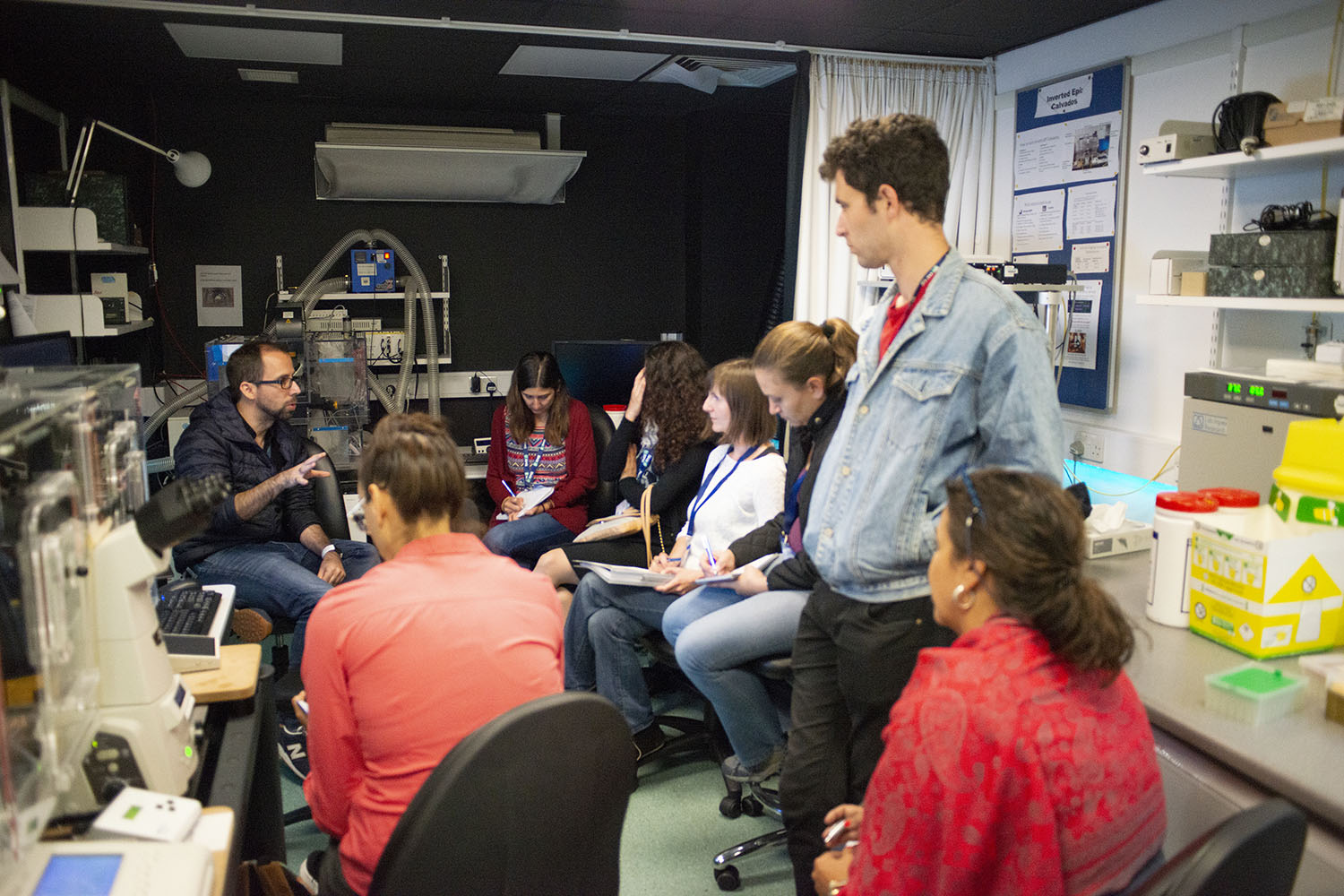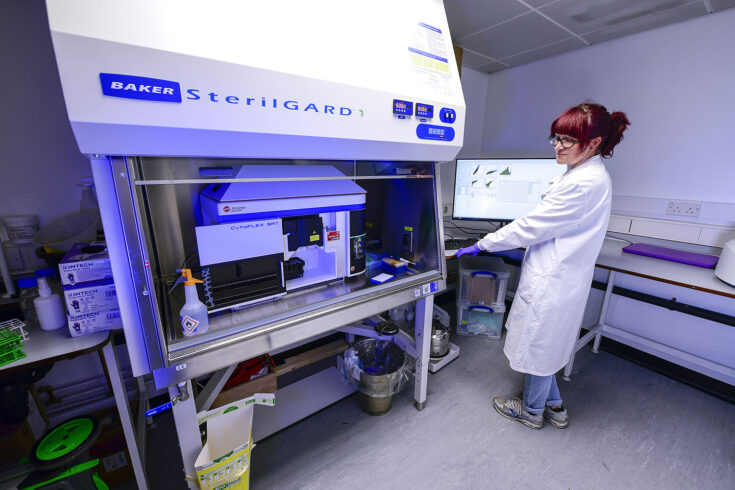Scientific equipment is one of the silent engines that keeps UK research world leading. But research equipment is often expensive and it is challenging to find dedicated funding sources.
So-called ‘mid-range’ equipment can often be the workhorse of the lab enabling you to see cells at atomic resolution or to extract molecular components of a sample. This could include high-tech microscopes to boost virus research or cloud-based computing kit to interpret ‘big data’. For our funding opportunity, costs for these behemoths can range from £100,000 up to £800,000.
New equipment can create a paradigm shift in the ability to understand complex biological processes which underpin societal challenges such as dementia and cancer. As we push the boundaries of human knowledge, we need the new tools to enable us to unlock the answers to maintaining our health and fighting disease.
What’s the trick?
As a responsible funder we need to ensure we maximise the benefits of any investments. Unfortunately, there is no magic cost calculation or number of researchers who must use the equipment; each application has to be judged on its merits.
There is 1 crucial trick however. And that is maximising the impact and outputs of the equipment to benefit the most exciting research and making sure you demonstrate this in your application. Read on to find out how.
1. Tap into technical expertise

Training up new researchers on super-resolution imaging kit at the summer school of the Medical Research Council (MRC)-funded Edinburgh Super-Resolution Imaging Consortium.
Credit: Institute of Genetics and Cancer, Graphics Team (Craig Nicol and Connor Warnock)
“It is great when you have input from and recognition for the technical staff, it gives the bid much greater credibility”, according to a member of our funding panel. UK Research and Innovation (UKRI) has a strong commitment to support technical careers. So tap into the expertise of the technical experts. Do not forget any training and necessary career development this new equipment will offer them.
2. Justify the science and the tech
Getting both of these right will maximise your chances. “The most convincing grants were when both science principal investigators and technical experts on the panel could see their concerns were addressed properly, so the science case and business plan worked together,” said another panel member, commenting on applications we received in the first round.
3. Get the detail right
The panel members reviewing this funding opportunity have all been selected for their breadth of knowledge in mid-range equipment. When reviewing applications, 1 panel member had “just ordered one of these at half that price”. So get the detail right, as the panel know the technology in depth, its strengths and weaknesses and how much it should cost.
4. Why this machine
This is about the need not the cost, and in some cases people underestimate their requirements where a more expensive machine would better serve their needs. It is often helpful to show why you discounted other technologies and what evidence you have that this is the best solution to address all your science needs.
5. Check who else has one
We appreciate that due to demand there will be a need for many machines of similar type across the UK. In fact, in the last opportunity, we funded multiple examples of the same kit.
There is a wider environmental benefit to the UK if we can maximise the use of all our equipment through effective sharing. So, it’s critical you demonstrate you’re aware of what other options you have, their availability and wider usage. Demonstrating over capacity with existing machines could even strengthen your case.
6. Who will use the machine
If the lead principal investigator and a single project can fully justify why they solely need this equipment to fund breakthrough science, great. But when one of the strengths of your bid is the range of your users, make sure it’s based on user demand and not optimism. Make user demand specific to this kit and evidence it by scientific need. Make sure all the users can justify the need for the higher spec machines.
7. Do not forget the data
Biomedical sciences is becoming an ever more data-intensive endeavour. Whether that be data volume, data complexity, data size, or the necessary processing power to extrapolate meaningful insights. Show that you understand the data challenges the new equipment will present and explain to the panel how you’ll mitigate these.
8. Do the math
Whether it’s cost recovery income, data storage or sample capacity, make sure you crunch those numbers with the people that will run the facility. This is to make sure they are realistic and well founded. If the panel get their calculators out and find your math wanting it does not bode well for the quality of your application.
9. Avoid the acronyms
This is always good advice for any science panel. Please save the panel having to look up each complex acronym. Let the strength of your arguments flow off the page and avoid them as much as possible.
10. Make it financially sustainable
The equipment you’re requesting will hopefully run for many years. But this will have cost implications for regular maintenance and consumables. Show you understand the cost implications of having the machine and have put in place good practice to manage them.
Find out more
The deadline for the next equipment funding opportunity is 12 January 2023.
Equipment funding opportunities can have a wide range of benefits to the research ecosystem, as demonstrated through our Clinical Research Infrastructure Initiative.
Our infrastructure and capital strategic advisory group is responsible for advising and shaping the Medical Research Council’s strategy for infrastructure and capital support for the UK medical science community.




